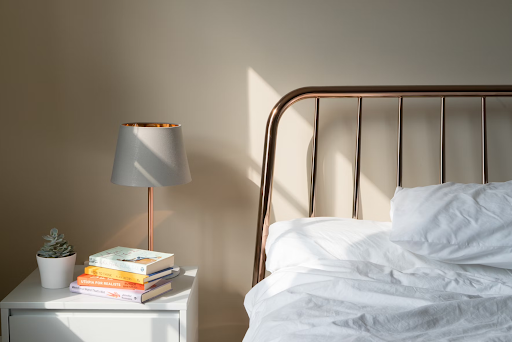How Many Pillows Should You Sleep With?

Author: Jonathan Warren

Most people tend to sleep with two pillows, but the majority of sleep experts actually recommend you should sleep with one. This is because, in its purest form, a pillow is designed to raise your head just enough to align your head, neck and spine in the ideal sleeping position. So, if your nighttime setup currently looks like a cushion fort, it could be time to rethink your pillow situation to improve your quality of sleep.
Here, we take a look at the best types of pillows for sleeping and which are the most suitable for different kinds of sleepers!
But firstly, what is the best pillow for sleeping?
The only correct answer to this question is the one that best works for you! While some might like a thin and soft pillow, others may prefer something a little more plump and firm. So, while you’re shopping around for your perfect pillow, we’d suggest keeping these three important factors in mind – size, material and fillings.
Size
A standard UK size pillow measures in at around 20” x 26”, but did you know the size of your pillow can actually play a really important role in determining the quality of your sleep? In fact, the Sleep Foundation’s research has outlined how different sized pillows can benefit different types of sleepers. For example, side sleepers tend to enjoy the standard size as they tend to squish their pillow, whereas people who tend to move around a lot at night may prefer a larger pillow with more surface area. Instead, restless sleepers could opt for a Queen (20” x 30”) or King (20” x 36”) size pillow.
Material
As we’re after the ultimate in comfort here, the way your pillow feels is going to be a huge deciding factor. The most recommended pillow casing material tends to be cotton. A natural fibre, cotton is soft, breathable, more sustainable and kinder to your skin. Other materials can include synthetic fibres such as viscose or lyocell which are known for their smooth feel, and polyester blends which tend to be more affordable although less natural-feeling.
Fillings
Saving the most important consideration until last, the filling of your pillow is the key to a great night’s sleep. From anti-allergy pillows to natural down and feather fillings, memory foam, latex, cool gel technology and even water pillows, there are so many different fillings for you to discover. Just remember, prioritise comfort and support while you’re testing out new pillows!
How many pillows should side sleepers use?
Now contrary to our previous recommendation of one pillow, side sleepers actually get to sleep with two… Just not under their heads! The idea here is that side sleepers will best align their spines while sleeping by having one supportive medium firm pillow beneath their head, and another firm pillow nestled between their legs to ease stress on the hips and lower back.
How many pillows should back sleepers use?
In regard to spinal alignment, sleeping on your back is half the battle as this is the most recommended position for your body’s health. To maintain the most natural spine curvature during your sleep, opt for one soft pillow. However, if you want to even further improve your sleep posture, you could also pop another soft pillow under your knees!
How many pillows should front sleepers use?
Sad news, front sleepers – stomach sleeping is hard on the neck and spine. Not only does it misalign your spine, but sleeping on your front adds undue stress on your neck and hips, leaving you feeling achy and sore come morning time. But if this is the only way you can sleep, don’t fret! Experts recommend using a soft pillow under your head to keep you as low to the mattress as possible to position your spine correctly, and then using a medium pillow beneath your pelvic area to maintain some spinal curvature. And if you really want to treat yourself, you could even try out a full body pillow for size which can help to relieve joint pressure and create more surface area for breathing and airflow!
How often should you change your pillows?
Sleep hygiene experts recommend replacing pillows every one to two years, but there is no hard and fast rule. This timespan however ensures that your pillow is performing at its best capacity, providing the correct support and remaining clean and free of any irritating allergens.
But while your pillow does have an expiry date, there are steps you can take to prolong its shelf life! Make sure to wash them on a regular basis, air them out when you can to kill off any germs or nasty smells, and keep them in clean and breathable pillowcases.
Looking for more sleep hygiene hints and tips?
Check out our Time4Sleep blog for the latest guides, advice and thinking on how to make sure your sleep is the best quality it can be.



